| T O P I C R E V I E W |
| lemonade kid |
Posted - 25/07/2013 : 21:32:09
Tim Buckley
Like Nick Drake, Gene Clark, Jim Morrison, Janis, Jimi...Tim's candle burned too brightly, too quickly. But Tim Buckley, though less universally known, is one of the true geniuses of music...and his music spanned folk, folk/rock, psychedelia, folk jazz, experimental freeform jazz and blue eyed soul sex-funk...all performed as well as any. -lk
Possibly my favorite live performance was on The Monkees TV show...
watch this with wonder, before reading his story below...hypnotic.
http://www.youtube.com/watch?v=vMTEtDBHGY4
Listen and read on...Once I Was
http://www.youtube.com/watch?v=AagsRPVIzcc
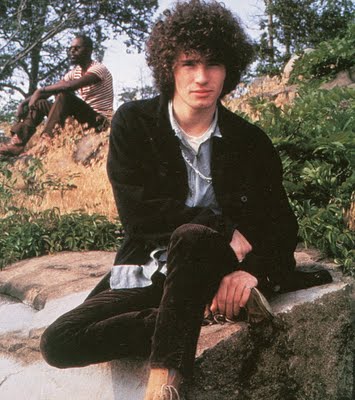
Timothy Charles "Tim" Buckley III (February 14, 1947 – June 29, 1975) was an American singer and musician. His music and style changed considerably through the years; his first album (1966) was mostly folk oriented, but over time his music incorporated jazz, psychedelia, funk, soul, avant-garde and an evolving "voice as instrument," sound. Though he did not find commercial success during his lifetime his influence is felt today by people such as the English indie rock band Starsailor who named themselves after his album of the same name and he is much admired now for his uniqueness and innovation as a musician including his great vocal range and singing ability. He died aged 28, leaving behind wife Judy and son Taylor, and son Jeff Buckley from his marriage to Mary Guibert.
Tim Buckley was born in Washington, D.C. on St. Valentine's Day, to Elaine Buckley (née Scalia), an Italian American, and Timothy Charles Buckley Jr., who was the son of Irish immigrants from Cork. He spent his early childhood in Amsterdam, New York, an industrial city approximately 40 miles northwest of Albany; here at five years old he made his first acquaintance with music, his mother's progressive jazz recordings (she was a fan of Miles Davis).
Tim's musical life began in earnest after his family moved to Bell Gardens in southern California in 1956. His grandmother had introduced him to the work of Bessie Smith and Billie Holiday, his mother to Frank Sinatra, Miles Davis and Judy Garland and his father to the country music of Hank Williams and Johnny Cash. When he attended Bell Gardens' public schools he was ready to catch the folk bug going around. At the age of 13 he taught himself the banjo, and with his new friend, Dan Gordon, and several others formed a folk group inspired by the Kingston Trio that played local high school events.
During his initial high school years he was a popular and engaged student; he was elected to numerous offices, played on the baseball team and quarterbacked the football team. During a football game he broke the first two fingers on his left hand, permanently damaging them. He later said that the injury prevented him from playing barre chords. This disability may have led to his use of extended chords, many of which don't require barres.
His last two years in school, which included a short stint at Loara High School in Anaheim, California, found him disillusioned. Tim quit football and cut classes regularly; he had decided school was of little value and that it would be more fruitful for him to focus most of his attention on music. He befriended Larry Beckett, his future lyricist, and Jim Fielder, bass player with whom he formed two separate musical groups, The Bohemians, who initially played popular music, and later added originals co-written by Buckley and Beckett, and The Harlequin 3, a folk group which regularly incorporated spoken word and beat poetry into their gigs.
In 1965 during French class at Loara High School, Buckley met Mary Guibert, one grade his junior and his soon to be wife. Their relationship inspired some of Buckley's music, and provided him time away from his turbulent home life. His father, a highly decorated World War II veteran, had become unstable, angry and occasionally violent in his later years. He had suffered a serious head injury during the war; that, along with a severe work-related injury, was said to have affected his mental balance.
Mary and Buckley married on October 25, 1965, as Mary was pregnant (it turned out to be a hysterical pregnancy). The marriage angered Mary's father enough for him to forgo the wedding; while Buckley's father attended, but joked to the priest, "I give it six months". Shortly after the wedding Mary realized that she was not pregnant after all.
The marriage was tumultuous, some ups and lots of downs. Buckley moved out to his own apartment. Mary soon became pregnant. After several months of married and "pregnant," life, Buckley found himself neither willing nor able to cope with marriage, and with pregnancy in particular. From then on he and Mary only saw each other sporadically. They divorced in October 1966 about a month before their son Jeffrey Scott (Jeff Buckley) was born.
By the time Buckley had graduated from high school he and lyricist/friend Beckett had written a couple dozen songs; several were to appear on Tim's debut album, Tim Buckley. "Buzzin' Fly", was also written during this period, and was featured on Happy Sad, his 1969 LP.
Buckley's ill-conceived college career (1965, Fullerton College) lasted only two weeks; he found himself unable to cope with both school and a fledgling music career. Buckley dropped out and dedicated himself fully to his music and to playing L.A. folk clubs. During the summer of 1965 he played regularly at a club co-founded by Dan Gordon. Later in the year he played various Orange County coffeehouses (such as the White Room in Buena Park) and the Monday night hootenannies at the famed Los Angeles' Troubadour. That year Cheetah magazine deemed Tim Buckley an up-and-comer, one of "The Orange County Three", along with Steve Noonan and Jackson Browne.
In February 1966, following a gig at L.A.'s It's Boss, Mothers of Invention drummer Jimmy Carl Black recommended Buckley to Mothers manager, Herb Cohen. Cohen saw potential in Tim and soon landed him an extended gig at the Nite Owl Café (Greenwich Village, NYC). Buckley's new girlfriend, Jainie Goldstein, drove him cross country to the Nite Owl gig in her VW bug. While living in the Bowery (NYC) with Jainie, Buckley ran into Lee Underwood, and asked him to play guitar for him at the Nite Owl. From there, they became lifelong friends and collaborators.
Herb Cohen had signed Buckley, but not The Bohemians. "It was always understood that, ultimately, it was about Tim," Fielder noted;[6] Cohen recorded a six song demo acetate disc, which he sent to Elektra records owner Jac Holzman. Holzman was very much taken by Buckley's music and, after seeing him play live, offered him an Elektra recording contract.
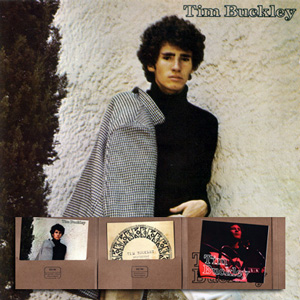
Folk rock
Buckley recorded his self-titled debut album in three days in Los Angeles, in August 1966. He was generally unhappy with his albums after the fact; he described this one as "like Disneyland".[1] The album's folk-rock style was largely typical of the time, although many people including Lee Underwood felt that the string additions by Jack Nitzsche "did not enhance its musical quality;"[7] critics did note Buckley's distinctive voice and tuneful compositions.[2]
The record featured Buckley and a backing band of Orange County friends, as well as Lee Underwood. Underwood's mix of jazz and country improvisation on a twangy telecaster became a distinctive part of Tim's early sound. Jac Holzman and Paul Rothchild's production style and Jack Nitzsche's string arrangements cemented in the record's mid-sixties sound.
On later reflection, those involved with the album saw it as demonstrative of the potential of the group. Lee Underwood summed it up as "a first effort, naive, stiff, quaky and innocent [but] a ticket into the marketplace". Producer Jac Holzman expressed similar sentiments, stating in 1991, that Tim "wasn't really comfortable in his own musical skin". Larry Beckett suggested that the band's desire to please audiences held them back.
Elektra released two singles promoting the debut album; "Wings" appeared in December with "Grief in My Soul" as a b-side, and "Aren't You the Girl" with "Strange Street Affair Under Blue" the next month. Herb Cohen suggested that Buckley should work with producer Jerry Yester and Elektra's demand for a new single represented their first challenge. Buckley and Beckett planned a songwriting session and listened to the radio relentlessly in search of making a hit record. The results were "Once Upon a Time" and "Lady Give Me Your Key". The former was not well regarded by the pair but they felt the latter had much potential. Despite this, Elektra decided not to release it as a single and the songs are assumed to remain in Elektra's record vaults. Rhino Records hoped to include "Lady Give Me Your Key" on Morning Glory: The Tim Buckley Anthology, but could not find the songs in time for its release.
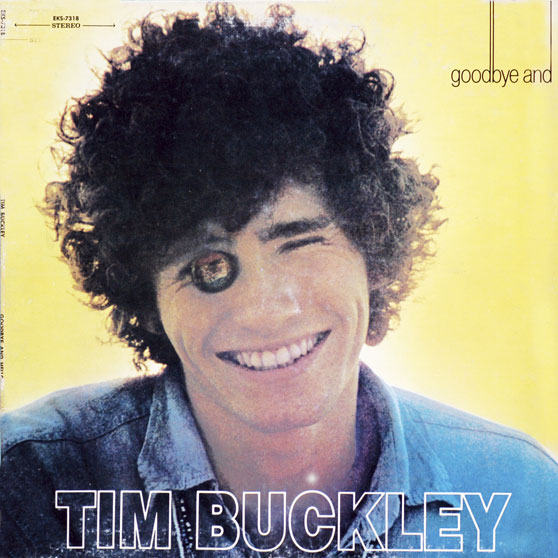
Goodbye and Hello
Goodbye and Hello, released in 1967, featured late 1960s-style poetry and songs in different timings and has been described as an ambitious release for the then 20-year-old Buckley. Reflecting the confidence Elektra had in Buckley and group, they were given free rein on the music and content of the album. Beckett continued as lyricist and the album consisted of half Buckley originals and half Beckett–Buckley collaborations. Critics noted the improved lyrical and melodic qualities of Buckley's music. Buckley's voice had also developed since the last release and the press appreciated both his lower register and higher falsetto in equal measure.
The subject matter of the album also distinguished it from its predecessor. Beckett addressed the psychological nature of war in "No Man Can Find the War", and Underwood welcomed Buckley's entry into darker territory with "Pleasant Street". "I Never Asked to Be Your Mountain" represented a confessional lyric to his estranged wife and child. Underwood also judged that the mix of introspective folk songs and political-themed content attracted folk fans and anti-war audiences alike. Elektra owner Jac Holzman had much faith in the young up-and-comer, renting advertising space for the musician on the Sunset Strip which was virtually unheard of for an unestablished solo act. The album reflected the feeling in the US at the time, Holzman stating: "the combined effect of his words, his music, his passion, his persona struck a particular resonance." Despite having some aspects in common with Bob Dylan, in terms of musical style and fashion sense, Buckley distanced himself from comparisons, expressing a general apathy towards the artist and his work. Whilst Goodbye and Hello did not make Buckley a star, it performed better in the charts than his previous effort, peaking at #171.
His higher profile also led to more opportunities; his song "Once I Was" (from the album, The Best Of Tim Buckley) played at the end of the Academy Award winning film "Coming Home" (Jon Voight, Jane Fonda, Bruce Dern) the album was used as a soundtrack to Hall Bartlett's 1969 movie Changes and Micky Dolenz landed Tim a spot to perform "Song to the Siren" on the final episode of The Monkees TV show. However, Buckley was wary of the press and media, often avoiding interviews or being unresponsive when they were necessary. After scoring a slot on The Tonight Show, Buckley was standoffish and insulting towards the host and on another TV appearance he outright rejected a plan to lip-synch to "Pleasant Street" and refused to play, although he can be seen on the Steve Allen show engaging in conversation and being complimentary towards the host. [1] Buckley did not see the album's sales as a path to commercial success, but rather an opportunity to express his musical creativity.
After Beckett was drafted into the Army, Buckley was free to develop his own individual style, without the literary restraints of before. Uneducated both vocally and instrumentally in the finer aspects of melody and lyric structure, the quality of the tracks he produced demonstrate the natural talent he possessed.
He described the jazz/blues-rock that he was associated with at the time as "White thievery and an emotional sham." With this opinion strongly set, he rebelled against what was commercial, and persevered on a course of development that alienated many of his fans. Drawing inspiration from jazz greats such as Charles Mingus, Thelonious Monk, Roland Kirk, and vocalist Leon Thomas, his subsequent independently-recorded music was vastly different from previous recordings.
In 1968, Buckley recorded Happy Sad, which reflected folk and jazz influences. This would be his best charting album, peaking at #81. Dissatisfied with playing the same material continuously, and disenchanted with the music business that he felt was restraining him from producing new material, he began to weave in new songs into his performances, featuring an increasingly minimalist sound from his heavily orchestrated first two albums, and introducing a vibraphone player, David Friedman, into his band. However, this attempted rejuvenation was a commercial failure; becoming largely based on improvisation, his performances were less accessible to the audiences who saw him as a folk-rock poster boy.
Middle period
During 1969, Buckley began to write and record material for three different albums: Lorca, Blue Afternoon, and Starsailor. Inspired by the singing of avant-garde musician Cathy Berberian, he decided to integrate the ideas of composers such as Luciano Berio and Iannis Xenakis in an avant-garde rock genre. He started to fully use his voice's impressive range. According to guitarist Lee Underwood, Buckley knew that Lorca had little to no chance in the commercial market, and due to his old friend Herb Cohen starting up a new label venture with Frank Zappa, Straight Records, he wanted to provide an album of older material that was a step back from his current direction, but one that would have a better shot at making a dent in the public's minds. Selecting eight songs that had yet to be recorded, these tracks evolved into the sessions for Blue Afternoon, an album that was quite similar to Happy Sad in style. Underwood himself contradicts this with a 1977 article he wrote for Down Beat magazine chronicling Buckley's career – he states that Buckley's heart was not into the Blue Afternoon performances and that the album was a perfunctory response to please his business partners.
Neither album sold well: Lorca alienated his folk base, while Blue Afternoon was widely criticized as boring and tepid – "[not] even good sulking music", as one critic wrote. Blue Afternoon was Buckley's last album to hit the Billboard charts, reaching #192. After the lack of success for both records, Buckley began to focus more on what he felt to be his true masterpiece, Starsailor.
Starsailor was a departure for Buckley, with free jazz textures under his most extreme vocal performance; ranging from high shrieks to deep, soulful baritone. Different from his first three albums, this personal album shared the same response as Lorca. It included the more accessible "Song to the Siren", later covered on record by This Mortal Coil, Robert Plant, John Frusciante, and Bryan Ferry.
The album was a critical and commercial failure. Following its release, Buckley's sales declined rapidly, and the quality of his live shows plummeted. Unable to produce his own music and almost completely broke, he turned to alcohol and drug binges. He also considered acting, with an unreleased low-budget group therapy-drama entitled Why? (1971) being the only film completed after several abortive meetings with Hollywood producers.[clarification needed] The film was an experimental use of the new medium videotape, commissioned by Technicolor.
In April, 1970, Buckley married Judy Brejot Sutcliffe in Santa Monica, California, and subsequently adopted her son, Taylor Keith Sutcliffe.
Sex-Funk period
Buckley abruptly disbanded his Starsailor ensemble near the end of 1970, and assembled a new band of funk players including Joe Falsia and Buddy Helm. With this band, he cut three albums of what has been described as "sex funk": Greetings from L.A., Sefronia and Look at the Fool. Tim had alienated much of his hippie fan base with his previous two albums, but retained a cult following. Buckley's often sexually frank lyrics ("whip me, spank me") prevented the songs from receiving airplay. (However, "Greetings from L.A." received a great deal of airplay on KQRS-FM in Minneapolis and became something of a local hit. Stores in the Twin Cities sold the album steadily until it was no longer available.)
In 1975, Buckley quit using drugs and engaged the musical press regarding a live album comeback. Buckley began performing revamped versions of material drawn from his whole career (except Starsailor and Lorca) as a response to the desires of his audience, which he had always spurned in the past.
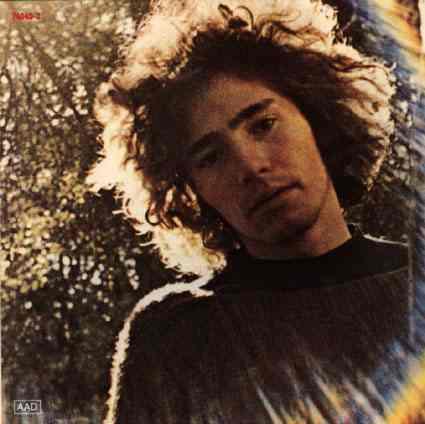
Death
On June 28, 1975, Buckley completed the last show of a tour in Dallas, Texas, playing to a sold-out venue with 1,800 people in attendance. Buckley celebrated the culmination of the tour with a weekend of drinking with his band and friends, as was his normal routine. On the evening of June 29, 1975, Buckley accompanied long-time friend Richard Keeling back to his house. What happened next is unclear, but at some point Keeling produced a bag of heroin, which Buckley ingested. According to the book, "Dream Brother", about Tim (and son Jeff) Buckley's life, reports of him walking in on Keeling having sex with a woman, getting angry and being handed a bag of heroin by Keeling so as to mollify him are, most likely, apocryphal.
What is known is that Buckley's reaction to the heroin put him in such a bad condition that friends took him home. Upon his return home, his wife, Judy, seeing his inebriated state, laid him on a pillow on their living room floor and questioned his friends as to what had happened. Judy then moved Buckley into bed. Checking on him later, she found he had turned blue and was no longer breathing. Attempts by friends and paramedics to revive him were unsuccessful and he was pronounced dead on arrival.
Having diligently controlled his drug habit while on the road, his tolerance was lowered, and the combination of the drugs he took mixed with the amount of alcohol he had consumed throughout the day was too much. The coroner's report by Dr. Joseph H. Choi stated that he died at 9:42pm, June 29, 1975, from "acute heroin/morphine and ethanol intoxication due to inhalation and ingestion of overdose". Long-time friend and lead guitarist, Lee Underwood, has stated that "on many previous occasions Buckley had ingested considerably more alcohol and drugs than this."
Aftermath
Buckley's death shocked many of his friends and relatives. The drug-related death was in stark contrast to how people had seen him at the time. The sound recorder at Buckley's last show noted "someone offered him a drag off of a joint and he refused. He didn't appear strung out in any way. He was very together both physically and psychologically". Some friends were left dazed by the situation, Buckley's old tour manager Bob Duffy stated: "It wasn't expected but it was like watching a movie, and that was its natural ending." Lee Underwood went on to write a biography about him, Blue Melody:Tim Buckley Remembered, reflecting on his life and death and how he had been influenced by Buckley. Other friends saw his fate as more predictable, if not inevitable; his lyricist, Larry Beckett later said of Buckley:
"He continually took chances with his life. He'd drive like a maniac, risking accidents. For a couple of years he drank a lot and took downers to the point where it nearly killed him, but he'd always escape. Then he got into this romantic heroin-taking thing. Then his luck ran out."
Given the circumstances of his death, police charged Richard Keeling with murder and distribution of heroin. The evidence was insufficient and, at the hearing on August 14, 1975, at Santa Monica Municipal Court, Keeling pleaded guilty to involuntary manslaughter. Keeling was given the chance to avoid time in jail by doing voluntary work but he failed to keep to the bargain and was sentenced to 120 days in jail and four years probation.
Buckley died with little to his name beyond the musical legacy of his nine albums. All he owned was a guitar and an amplifier and he died in debt. Friends and family, some 200 in number, attended the funeral at the Wilshire Funeral Home in Santa Monica. Those in attendance included: manager Herb Cohen, guitarist Lee Underwood, Tim's mother Elaine and sister Katey, and Buckley's widow, Judy. Also in attendance was Buckley's adopted son, Taylor, who would eventually join the U.S. Marines, and currently resides in Arizona. (His son, Jeff, was not invited to the funeral, something that would later compel him to perform at a tribute for his father who he otherwise felt ambivalent about.) Reportedly, on the evening of June 29, 1975, Richard Keeling claimed that he heard Buckley's last words: "Bye, bye baby", almost surely addressed to his wife Judy.
Tim Buckley's song, "Once I was..." was used in the finale of the Hal Ashby film "Coming Home" when Bruce Dern sheds his clothing and swims into the ocean, suggesting suicide.
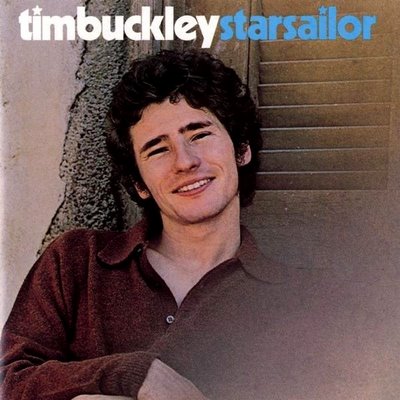
Discography
Studio albums
* Tim Buckley (1966)
* Goodbye and Hello (1967)
* Happy Sad (1969)
* Blue Afternoon (1969)
* Lorca (1970)
* Starsailor (1970)
* Greetings from L.A. (1972)
* Sefronia (1973)
* Look at the Fool (1974)
Live albums
* Dream Letter: Live in London 1968 (1990)
* Peel Sessions (1991)
* Live at the Troubadour 1969 (1994)
* Honeyman: Live 1973 (1995)
* Once I Was (1999)
* Copenhagen Tapes (2000)
* Live at the Folklore Center 1967 (2009)
Compilations
* The Late Great Tim Buckley (1978) Released in Australia only.
* The Best of Tim Buckley (1983)
* Morning Glory (1994)
* Works in Progress (1999)
* The Dream Belongs to Me: Rare and Unreleased 1968–1973 (2001)
* Morning Glory: The Tim Buckley Anthology (2001)
* Tim Buckley/Goodbye and Hello (2001) Compilation of first two albums.
* Take 2: Greetings from L.A./Tim Buckley (2005) Compilation of the two albums.
* Tim Buckley (2011) Rhino Handmade two-disc set. Disc One: Both the stereo and mono versions of his debut album. Disc Two: 22 unreleased recordings Buckley from Nov. 1965 with The Bohemians (12 tracks) and in 1966 with Larry Beckett (10 tracks).
* Starsailor: The Anthology (2011) Demon Music Group Ltd (Double CD)
Goodbye & Hello-complete album
http://www.youtube.com/watch?v=NF54ZBgqHjk
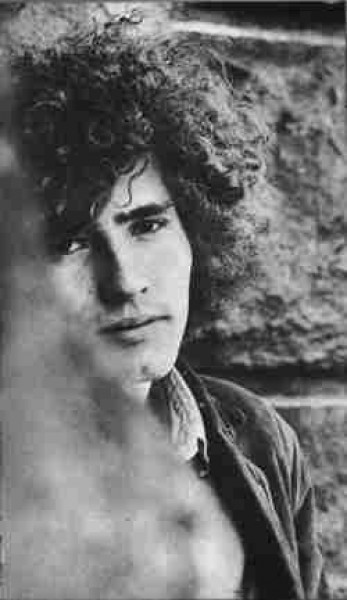
________________________________________________
Old hippies never die, they just ramble on.
-lk |
| 2 L A T E S T R E P L I E S (Newest First) |
| lemonade kid |
Posted - 25/07/2013 : 21:40:13
A full house of music videos by Mr. Buckley
Starting with Morning Glory...so bitter sweet
http://www.youtube.com/watch?v=MgNxopvE3ro&list=RD02CckFYoYq8GI
and possibly my favorite album by Tim & hardest to find (love my vinyl)--Blue Afternoon
http://www.youtube.com/watch?v=R2MZ7umJO40
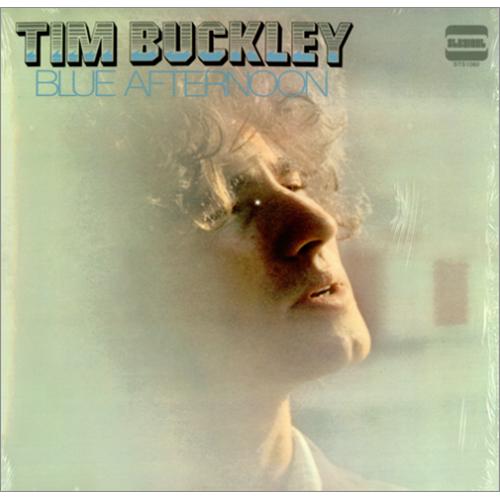
________________________________________________
Old hippies never die, they just ramble on.
-lk |
| lemonade kid |
Posted - 25/07/2013 : 21:35:36
Tim Buckley-My Fleeting House-full documentary
http://www.youtube.com/watch?v=QH_Xe2ic7DA
Tim Buckley: My Fleeting House is a DVD-Video collection of live appearances and performances by Tim Buckley. It features footage from throughout his career, starting from a 1967 performance of "Song to the Siren" on The Monkees TV show and ending with a performance from May 21, 1974 of "Dolphins" (written by fellow 1960s folk musician Fred Neil) for The Old Grey Whistle Test. Broadcasts from WITF-TV's The Show from 1970 has performances of "I Woke Up" and "Come Here Woman". The DVD also contains recorded interviews with occasional songwriting partner Larry Beckett, regular lead guitarist Lee Underwood and David Browne, author of Dream Brother: The Lives and Music of Jeff and Tim Buckley, a dual biography of Tim Buckley and his son Jeff Buckley
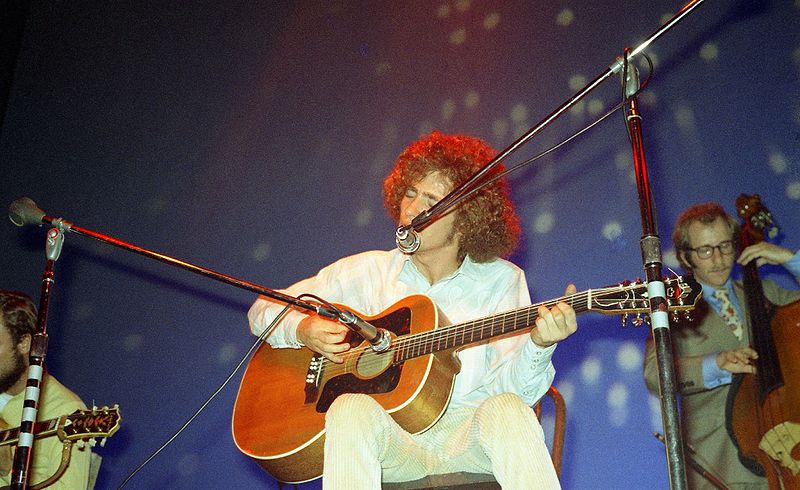
________________________________________________
Old hippies never die, they just ramble on.
-lk |
|
|


